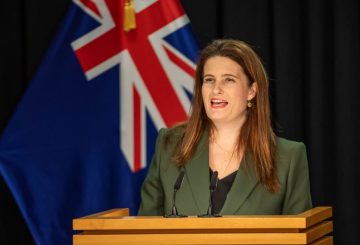다양성, 포용 및 민족 공동체 담당 장관 프리얀카 라다크리슈난 (Priyanca Radhakrishnan) 은 ACT-National 연합이 올해 총선에서 승리하면 소수 민족 공동체의 이익이 위협받을 것이라고 주장했습니다.장관은 지난주 오클랜드에서 열린 소수 민족 공동체를 위한 예산 이후 포럼에서 연설했습니다.
“10월에 정부가 바뀌면 우리 교육부가 이룬 이 모든 훌륭한 일과 소수 민족 공동체의 전반적인 이익이 위협받게 될 것입니다.“ACT 당은 이미 소수 민족 공동체부를 폐지하겠다고 선언했습니다.국민당이 아직 이에 대해 어떤 입장도 내리지 않고 있기 때문에, 그들이 집권하면 그들의 연합은 내무부를 폐지할 가능성이 높습니다.”
장관은 ACT의 대체 예산을 언급했는데, 이 예산에는 다양성, 포용 및 민족 공동체부를 포함한 인구 통계학적 부처를 폐지하려는 당의 의도가 요약되어 있습니다.“이들이 정부 정책에 미치는 추가적인 영향은 현대 다문화 사회로서 뉴질랜드의 통일성을 훼손하는 방향으로 작용할 가능성이 높습니다.”
ACT 당 지도자 데이비드 시모어 (David Seymour) 는 장관의 발언에 대한 논평을 묻는 질문에 교육부가 약속을 이행하지 못했다고 주장했다.“제 경험에 비추어 볼 때 뉴질랜드 사람들은 뒤틀린 조약에 따른 이등석 시민이 아니라 안전한 거리와 저렴한 생활, 존엄성 있는 대우를 받기를 원합니다.“ACT의 제안에 따라 소수 민족 공동체가 더 나은 서비스를 받을 수 있을 것입니다.”
크레딧: radionz.co.nz


















































-360x245.jpg)









